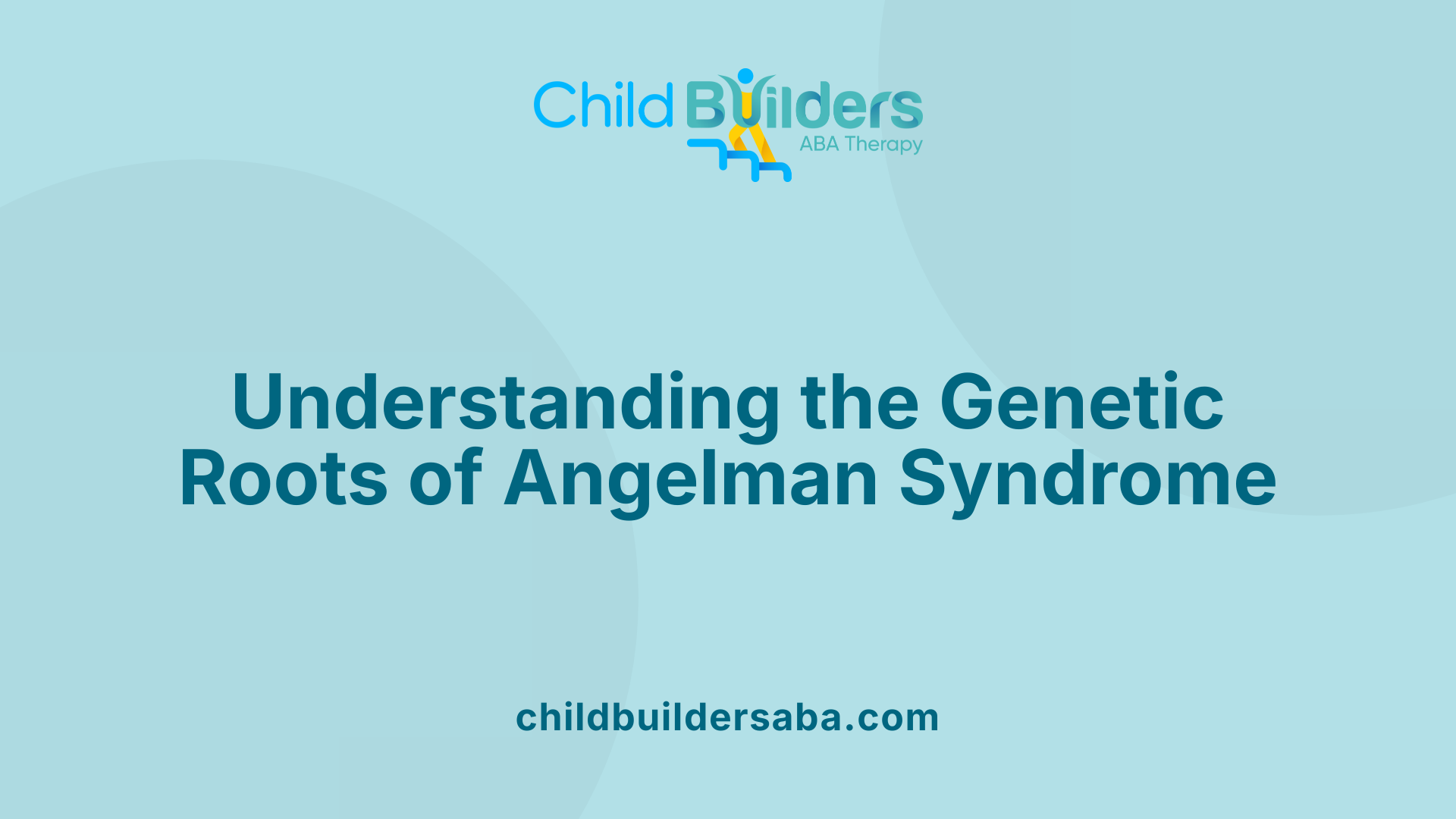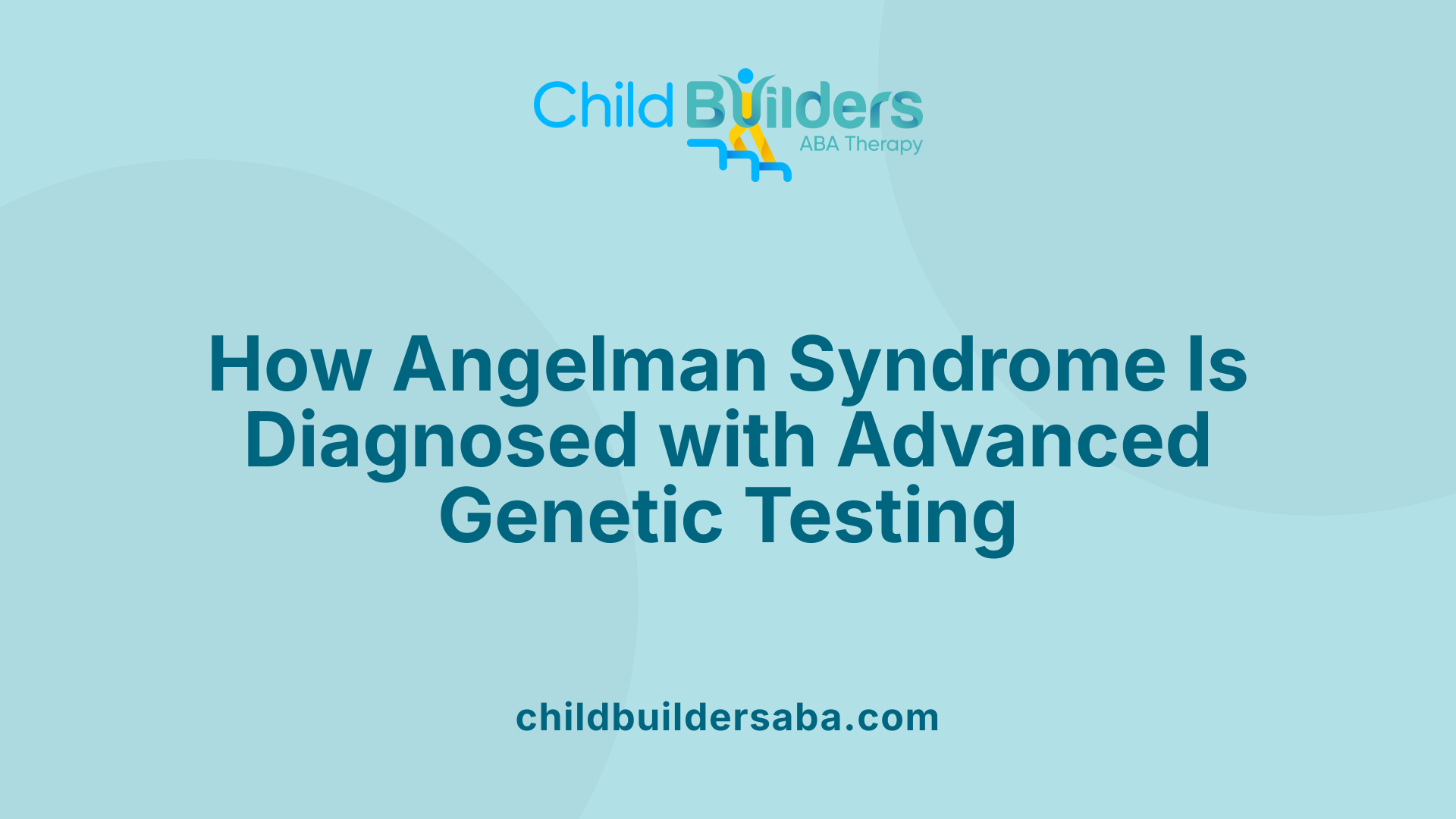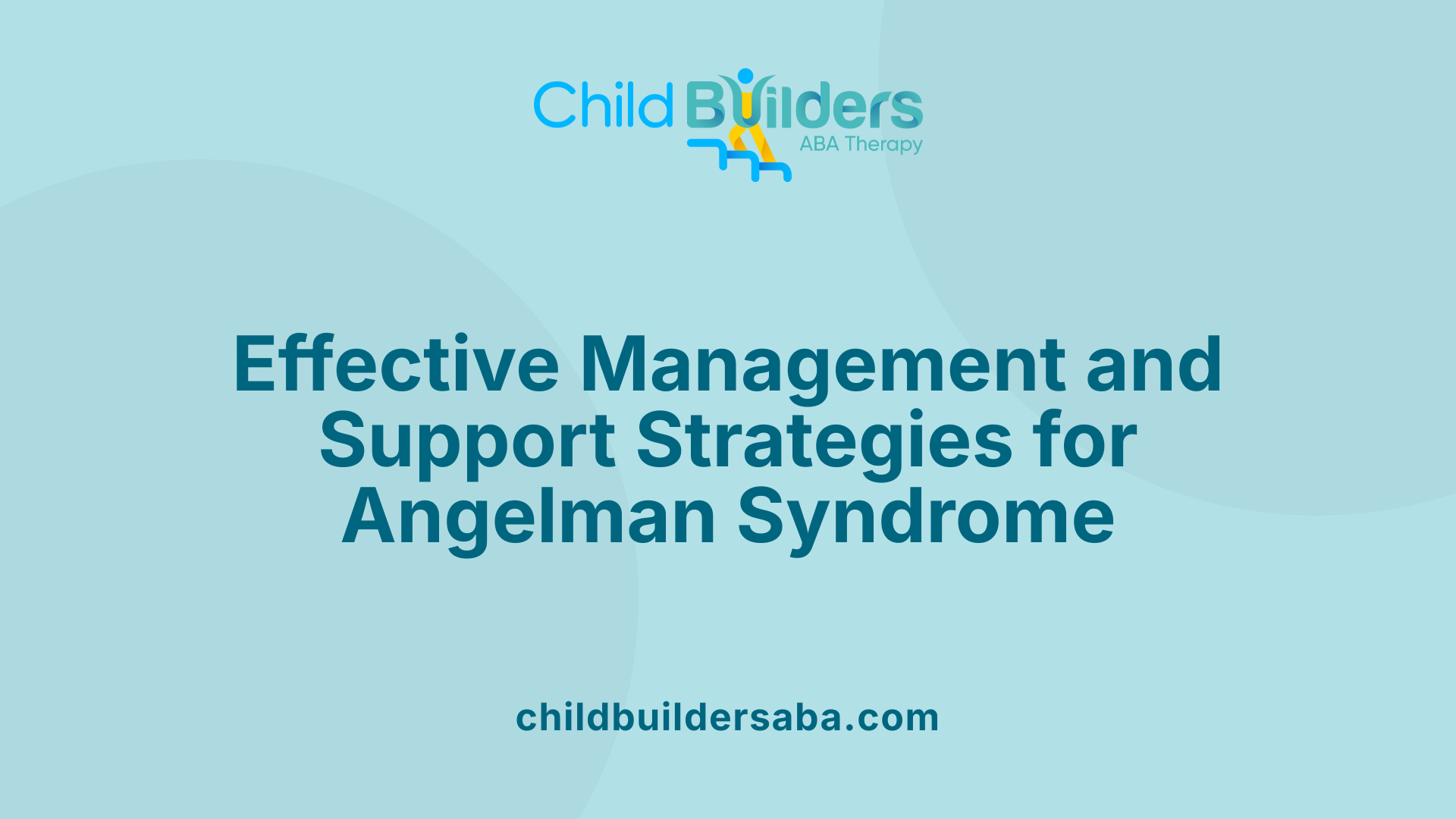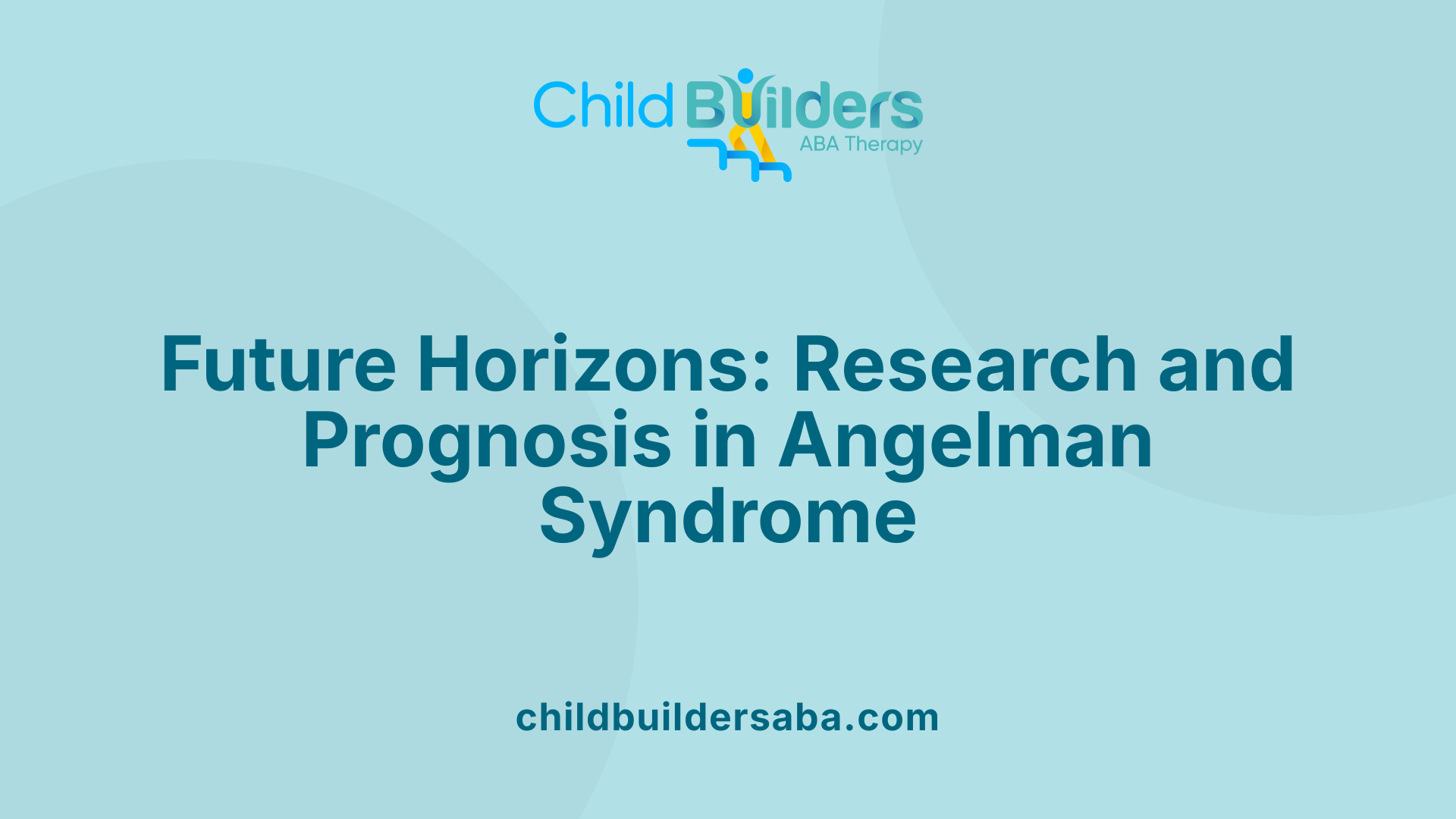Angelman Syndrome

Understanding the Foundations of Angelman Syndrome
Angelman syndrome (AS) is a rare neuro-genetic disorder that profoundly impacts neurological development, characterized by severe developmental delays, speech impairments, movement disorders, and distinctive behavioral traits. First described by Dr. Harry Angelman in 1965, this condition has since been the focus of extensive research aimed at understanding its genetic underpinnings, clinical presentation, and potential treatment strategies. Despite its complexity, recent advances in genetic testing and ongoing clinical trials provide hope for better management and, ultimately, a cure.
Defining Angelman Syndrome and Its Key Features

What is Angelman Syndrome?
Angelman syndrome is a rare neuro-genetic disorder caused by the loss of function of the maternally inherited UBE3A gene on chromosome 15q11-q13. It is characterized by significant developmental delays, severe speech impairments, problems with movement and balance known as ataxia, and a range of behavioral traits.
Typically appearing in early childhood, children with Angelman syndrome often exhibit a cheerful, excitable personality, with frequent laughter and smiling, which has earned the syndrome the nickname 'happy puppet syndrome' in the past. Diagnosis relies on a combination of clinical observations and genetic testing, including methylation studies, fluorescence in situ hybridization (FISH), and DNA sequencing to identify the specific genetic abnormalities involved.
Core Symptoms and Behavioral Traits
Children affected by Angelman syndrome usually show developmental delays between 6 and 12 months of age.
Severe speech impairment often results in minimal or no spoken words. Instead, individuals may communicate through gestures or alternative methods.
Movement issues are common, including ataxia or unsteady gait, trembling or jerky movements, and stiff legs.
Behaviorally, affected individuals tend to be extraordinarily happy, with episodes of frequent laughing, smiling, and excitement. Hyperactivity, hand-flapping, and short attention spans are also typical.
Seizures are common and typically start between ages 2 and 3, requiring control with anticonvulsant medications. Sleep disturbances, gastrointestinal issues, and fascination with water are additional behavioral and physiological traits.
Physical Features and Appearance
Physically, individuals with Angelman syndrome often display distinctive features, such as a prominent tongue protrusion, wide mouth with widely spaced teeth, and a small head size (microcephaly). They may also have a protruding jaw, light-colored skin, and light blonde hair.
Facial features tend to be round and 'coarse,' with deep-set eyes and a broad forehead. In adolescence and adulthood, many show additional features like scoliosis or abnormal curvature of the spine.
Age of Onset and Developmental Milestones
Developmental delays are typically noticeable by 6 to 12 months of age, with babies often appearing normal at birth.
Early signs include impaired sucking and feeding difficulties, followed by delayed sitting and walking.
By around age 2, most children experience episodes of seizures, microcephaly, and more pronounced motor deficits.
Though general growth may be slightly below average, most individuals with Angelman syndrome have a normal or near-normal lifespan. Early diagnosis and supportive therapies can significantly improve their communication skills, motor development, and quality of life.
This constellation of features makes Angelman syndrome a distinctive clinical diagnosis that benefits from timely genetic testing for confirmation, guiding tailored management plans and family counseling.
Genetic and Biological Foundations of Angelman Syndrome

What causes Angelman Syndrome at the genetic level?
Angelman syndrome (AS) is mainly caused by issues with a gene called UBE3A, which is located on chromosome 15. This gene plays a crucial role in brain development and function. In most cases, about 70%, the syndrome results from a deletion of a small segment of the maternal chromosome 15 that includes the UBE3A gene. This deletion means that the child's brain lacks a working copy of this gene.
Other genetic causes include mutations in the maternal UBE3A gene itself, which occurs in around 10-20% of cases. There are also instances where a person inherits two copies of chromosome 15 from their father instead of one from each parent, a situation called paternal uniparental disomy. This accounts for approximately 10% of cases and results in the absence of the active maternal UBE3A gene. Additionally, some cases arise from defects in the imprinting center—a regulatory region that controls gene activity—and these disrupt normal gene expression.
In the brain, only the maternal copy of UBE3A is active; the paternal copy is normally turned off through a process called imprinting. When the maternal copy is missing or defective, it leads to a deficiency in the UBE3A protein. This protein is vital for managing other proteins inside nerve cells, maintaining healthy brain functions.
These genetic changes impair the ubiquitin-proteasome pathway, a system in cells responsible for breaking down and recycling proteins. As a result, neurons do not function properly, leading to the intellectual disability, seizures, and movement problems seen in AS.
Role of the UBE3A gene
The UBE3A gene encodes a protein called E6-AP ubiquitin protein ligase, which helps regulate the degradation of other proteins within cells, including neurons. Proper functioning of this protein is crucial for normal brain development, synaptic function, and neural plasticity. When UBE3A levels are reduced or absent, abnormal protein accumulation occurs, disrupting neural circuits and contributing to the neurological symptoms of Angelman syndrome.
Genetic testing methods used in diagnosis
Diagnosing AS involves various genetic tests. Methylation analysis is often the first step because it can detect most cases caused by deletions and imprinting defects. If methylation tests are normal, further testing such as FISH (fluorescence in situ hybridization) can identify deletions more precisely. DNA sequencing of the UBE3A gene helps detect mutations, while chromosomal microarray analysis (CMA) can reveal small deletions or duplications. Recently, UBE3A gene mutation testing is used to identify point mutations or small deletions not seen with other methods. Together, these tests help clarify the genetic cause, inform prognosis, and guide family planning.
Prevalence and inheritance patterns
Angelman syndrome affects approximately 1 in 12,000 to 20,000 people worldwide. Most cases are sporadic, resulting from new mutations during reproductive cell formation, with no family history. The recurrence risk for future children is generally low, less than 1%, unless a parent carries a mutation or imprinting defect that can be inherited. In cases where the mother has a UBE3A mutation or an imprinting defect, the recurrence risk can be as high as 50%. Understanding these patterns helps families make informed decisions about genetic counseling and testing.
Diagnostic Procedures and Genetic Testing in AS

How is Angelman Syndrome diagnosed?
Angelman syndrome (AS) is mainly diagnosed through careful clinical evaluation combined with specialized genetic tests. Clinicians look for early signs such as severe speech impairment, developmental delays, characteristic behavioral traits like frequent laughter, and movement problems like ataxia.
To confirm the diagnosis, several genetic testing methods are utilized. The initial test often performed is a DNA methylation analysis. This test detects abnormal methylation patterns in the UBE3A gene region on chromosome 15 and can identify approximately 70% of cases caused by deletions or imprinting defects.
If the methylation test yields normal results, further analyses are conducted. UBE3A gene sequencing is performed to uncover mutations in the gene itself. Chromosomal microarray analysis, fluorescence in situ hybridization (FISH), or comparative genomic hybridization (CGH) are used to detect deletions or structural abnormalities in the chromosome 15 region.
Additional tests, such as uniparental disomy (UPD) analysis and methylation-specific multiplex ligation-dependent probe amplification (MS-MLPA), help determine whether the genetic cause involves paternal disomy or imprinting center mutations.
The role of EEG (electroencephalogram) is also significant, especially in evaluating seizures and abnormal brain activity commonly seen in individuals with AS.
Typically, diagnosis occurs between 6 months and 4 years of age, often prompted by developmental delays, seizure onset, or distinctive facial features.
| Diagnostic Step | Purpose | Detectable Conditions | Typical Age Range |
|---|---|---|---|
| Clinical Evaluation | Identify symptoms | Developmental delay, happy demeanor, movement issues | 6 months - 4 years |
| DNA Methylation Test | Detect methylation abnormalities | Deletions, imprinting defects | 6 months - 3 years |
| UBE3A Sequencing | Find gene mutations | Point mutations in UBE3A | 6 months - 4 years |
| FISH / Microarray | Detect deletions / structural abnormalities | 15q11.2-q13 deletions | 6 months - 4 years |
| UPD Analysis | Detect paternal disomy | UPD15 cases | As indicated |
More Information: Search for “Genetic Testing and Diagnostic Criteria for Angelman Syndrome” to explore detailed protocols and updates in diagnostic strategies.
Management Strategies and Support for Life with AS

What are the treatment and management options for Angelman Syndrome?
Since there is no cure for Angelman syndrome, current treatment strategies primarily aim to manage symptoms and support the development of affected individuals. The cornerstone of therapy involves medications to control seizures, which are common in AS. Antiepileptic drugs such as valproate, ethosuximide, and others are frequently prescribed to reduce seizure frequency and severity.
In addition to seizure management, a multidisciplinary approach includes various therapies to enhance motor skills, communication, and daily functioning. Physical therapy helps improve balance, coordination, and mobility, addressing ataxic gait and muscle weakness. Speech therapy is essential due to the severe speech impairment, assisting individuals to develop alternative communication methods like gestures, signs, or the use of assistive devices.
Occupational therapy supports fine motor skills and daily living activities, aiding independence. Behavioral and behavioral therapy focus on addressing hyperactivity, attention deficits, and behavioral challenges associated with AS. Sleep disturbances are common, so sleep aids such as melatonin and behavioral sleep techniques are employed to improve sleep quality.
Nutritional and gastrointestinal issues are also managed through dietary modifications, supplement use, and medications to alleviate reflux and constipation.
Looking to the future, research efforts are exploring gene-based therapies, such as approaches to activate the normally silent paternal copy of UBE3A, which could potentially address the root cause of AS. For now, treatment remains personalized, emphasizing symptom control, quality of life, and developmental support. Support services and specialized medical care provide essential ongoing assistance, ensuring that individuals with Angelman syndrome receive comprehensive, tailored care to maximize their potential and well-being.
Prognosis, Advances in Research, and Future Directions

What is the prognosis for individuals with Angelman Syndrome?
The outlook for those affected by Angelman Syndrome (AS) is generally optimistic regarding lifespan; most individuals live into adulthood with a nearly normal life expectancy. Symptoms such as developmental delays, speech challenges, and seizure activity tend to become less severe over time, especially with early intervention and comprehensive support. Early diagnosis, combined with therapies like physical, occupational, and speech therapy, can significantly improve motor skills, communication, and overall quality of life.
Many individuals with AS develop some degree of mobility and can engage in basic daily activities or live in supported environments. However, the degree of independence varies, and some may require lifelong assistance. Seizures, which often start between ages 2 and 3, can be controlled with medications, although they may recur or intensify without proper management.
While the condition presents considerable challenges, manageable complications such as injuries from falls or feeding difficulties are often addressed effectively through medical and supportive care. Overall, with ongoing advances in medical treatment and supportive therapies, individuals with AS can experience improved functional abilities and a better quality of life.
Impact of early intervention
Early detection of Angelman Syndrome plays a vital role in optimizing outcomes. Initiating supportive therapies shortly after diagnosis can improve motor skills, communication abilities, and behavioral regulation. Children who receive early intervention tend to show greater progress in developmental milestones and adaptive functioning.
Research developments in gene therapy
Recent scientific progress has focused heavily on understanding the genetic mechanisms underlying AS, particularly the function of the UBE3A gene. Cutting-edge research explores gene therapy as a potential cure, aiming to reactivate the paternal copy of UBE3A or replace the defective gene. Preclinical studies in mouse models have shown promising results, paving the way for future clinical trials.
Clinical trials and experimental treatments
Ongoing clinical trials are testing various therapeutic approaches, including antisense oligonucleotides (ASOs) that may unsilence the paternal UBE3A gene, and novel pharmacological strategies to improve seizure control and cognitive functions. Researchers are also investigating deep brain stimulation, neuroregenerative therapies, and targeted medication to address specific symptoms.
Resources for families and caregivers
Support organizations such as the Angelman Syndrome Foundation, FAST, and regional clinics offer vital resources, including genetic counseling, caregiver education, and access to clinical trials. These groups foster community support, promote awareness, and advocate for continued research investments. They serve as essential partners in helping families navigate the challenges and celebrate the milestones of living with AS.
| Aspect | Description | Additional Insights |
|---|---|---|
| Life Expectancy | Most individuals live into adulthood | Nearly normal lifespan, with some needing lifelong support |
| Early Therapy | Early intervention improves outcomes | Critical in enhancing communication and motor skills |
| Genetic Research | Advances in gene therapy | Focused on reactivating or replacing damaged gene functions |
| Treatments in Trials | New drug and therapeutic approaches | Ongoing investigation into more effective symptom management |
| Support Networks | Resources for families | Vital for ongoing care, education, and community engagement |
As research continues to evolve, the outlook for individuals with Angelman Syndrome becomes increasingly hopeful. In the coming years, innovative treatments and comprehensive support systems are expected to improve life quality and, ultimately, work toward a cure.
Bridging Research, Care, and Hope for the Future
While Angelman syndrome presents significant challenges, ongoing scientific research, comprehensive care strategies, and supportive resources are steadily improving the quality of life for affected individuals. Understanding its genetic basis has opened the door to innovative therapies and potential cures, fostering hope for a future where the syndrome’s impact can be minimized or eradicated. Collaboration among researchers, clinicians, families, and advocacy organizations continues to drive progress toward better treatments and ultimate goal of a cure, underscoring the importance of awareness, early diagnosis, and supportive intervention in transforming lives.
References
- Angelman syndrome - Symptoms and causes - Mayo Clinic
- Angelman Syndrome Foundation - Home
- Angelman syndrome - Wikipedia
- About Angelman syndrome - Angelman Syndrome Foundation
- Angelman syndrome - Genetics - MedlinePlus
- Angelman Syndrome - GeneReviews® - NCBI Bookshelf
- Angelman syndrome - NHS
- Angelman Syndrome: What It Is, Symptoms & Treatment
- Angelman Syndrome | Boston Children's Hospital
- Angelman Syndrome Research and Advocacy



.jpg)

































































































